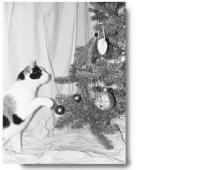Bay Street: Young Playwrights Stage Festival
Bay Street: Young Playwrights Stage Festival
The High School Playwrights Festival will be held on Saturday at 7 p.m. at the Bay Street Theatre in Sag Harbor.
The festival will feature six topical one-act plays written, produced by, and starring high school students from Sag Harbor, Bridgehampton, Southampton, and, a newcomer this year, the Frederick Douglass Academy in Manhattan. East Hampton High School chose not to participate this year.
The plays address issues that interest or concern high school students - previous years have seen drugs, child abuse, friendship, cowardice, and teenage pregnancy addressed, among other subjects both serious and amusing.
Hands-On Training
The event, now in its fourth year, is the culmination of Bay Street's Educational Outreach Program. The program is headed by Bay Street's producer, Murphy Davis, its program administrator, Marilyn Koch, and two instructors, Mary Spitzer and John Martin Green.
The High School Playwrights Festival offers students a chance to experience hands-on-training in all aspects of theater, from writing and acting to production work.
Three-Day Workshop
The course includes a visit to a Manhattan theater production. Working with the theater's professional staff, the students learn about lighting, scenic and costume design, and theater administration, in addition to writing and producing the plays.
The success of the program led to the development of a pilot project for an intensive workshop, held in November, where 26 students from the different schools lived and worked together at the Harbor for Boys and Girls.
A student play from this three-day workshop will be presented along with the other plays, one from each school.
Tickets to the festival can be charged by phone by calling the Bay Street box office.

